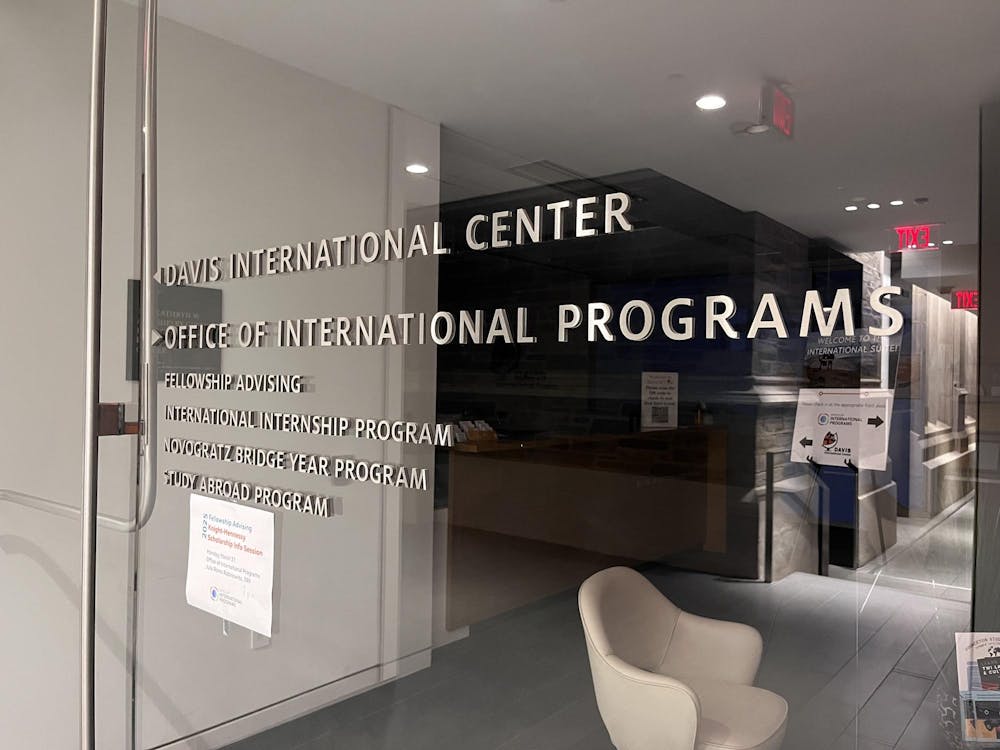Plans for the $300 million arts neighborhood in the southwest corner of campus continue to evolve, despite the loss of the project's lead architect last fall.
The November resignation of Renzo Piano Building Workshop has not delayed the project's progress, University architect Jon Hlafter '61 said. "It's a project that means a lot to the future of the University" and is thus continuing on without the renowned Italian architect's oversight.
Hlafter explained that Piano "left in part because the timetable did not suit his goals of being able to work on new projects within the immediate future." Beyer Blinder Belle, the firm that is helping to develop the University's 10-year master plan, has continued to work on the project.
The University had hoped that Piano might take interest in the project once it reached the stage of individual building design. But, after conversations with the firm, campus planning officials decided to move on, Executive Vice President Mark Burstein said.
"We wanted an architect who really thought about this [arts neighborhood] as an important work in their portfolio of projects," Burstein said. The University is focusing its search for architects of individual buildings on less famous firms that would be taking a significant step up in designing a building at Princeton.
Several firms will be selected to design buildings, with each one focusing on a different aspect of the arts neighborhood — the academic buildings, the art museum and the performance halls. Arts faculty will also have a voice in the planning.
Brian McDonald '83, vice president for development, said the University hopes to select the first architect for the arts neighborhood within the next six months and aims to have a "pre-schematic design" within a year.
The capital campaign
While planning continues for the arts and transportation neighborhood, the University will begin to raise funds for the project as part of its new capital campaign.

Set to kick off on Nov. 9, the campaign seeks to raise $1.75 billion for a variety of projects, of which "the arts and the arts neighborhood are a large component," McDonald said.
Peter Lewis '55 donated $101 million for the creative and performing arts. "In addition to Peter Lewis' magnificent gift we will be seeking to raise at least $200 million more," McDonald said, adding that the money will be approximately split between infrastructure for the arts — the buildings that will comprise the new arts neighborhood — and arts programs themselves.
"The infrastructure for some of these programs is massive," said Paul Muldoon, creative writing professor and chair of the Center for the Creative and Performing Arts.
Arts programs such as theater and dance require a great deal of supplies, and the capital campaign will aim to "keep the cost down as much as we can for our students," Muldoon said.

On the other hand, he said, "to run a world-class creative writing program, all one needs is a few pens or pencils, or their equivalents."
The arts neighborhood will include new space for the creative and performing arts, including theater, dance and music, as well as space for administration.
An art museum will be built in the neighborhood to complement the museum space in centrally located McCormick Hall. The museum would have spaces designed specifically for large-scale modern art, McDonald said. "One of the things that we can't do well in the existing museum is exhibit large 20th-century and contemporary paintings and sculptures. We would really love the chance to do that."
Beyond the buildings
"The neighborhood," Muldoon said, "is not the only way the arts will be flourishing at Princeton."
Creative and performing arts faculty will, under Muldoon's leadership, continue to expand arts programs at Princeton during the estimated five to six years that will elapse before the new arts neighborhood opens.
The creative writing program, for example, currently offers "basic courses" in poetry, translation and fiction. But President Tilghman's new arts initiative provides funds for "extending this range," Muldoon said, citing screenwriting and autobiography courses that are being offered this year.
"All of these programs have been scraping and scrounging for years ... living from hand to mouth," Muldoon said. "The president has gone out of her way to say that we have, in her mind, a special place in the University," he added, applauding Tilghman's commitment to the arts.
In addition to expanding course offerings, Muldoon plans to set up a society of fellows in the arts. This fellowship program would bring in artists early in their careers. The society would build on the model of the Hodder Fellowship, which has funded humanists for one year of teaching and independent work since 1944.
Muldoon encouraged more student members of creative groups to get involved in the existing arts programs on campus.
"I'd love to see the energy associated with [the Triangle Club] coming into our formal classes" where eminent arts faculty await them, Muldoon said.
"It's important for our students to see that art does not begin and end with the gates on Nassau Street or even at the Dinky station," Muldoon said.







